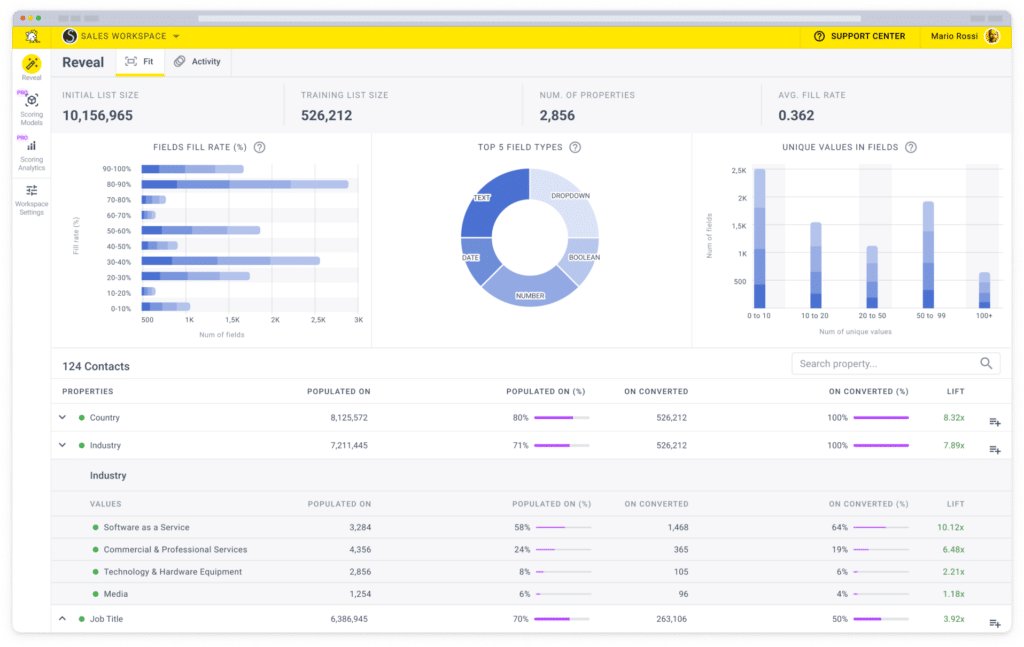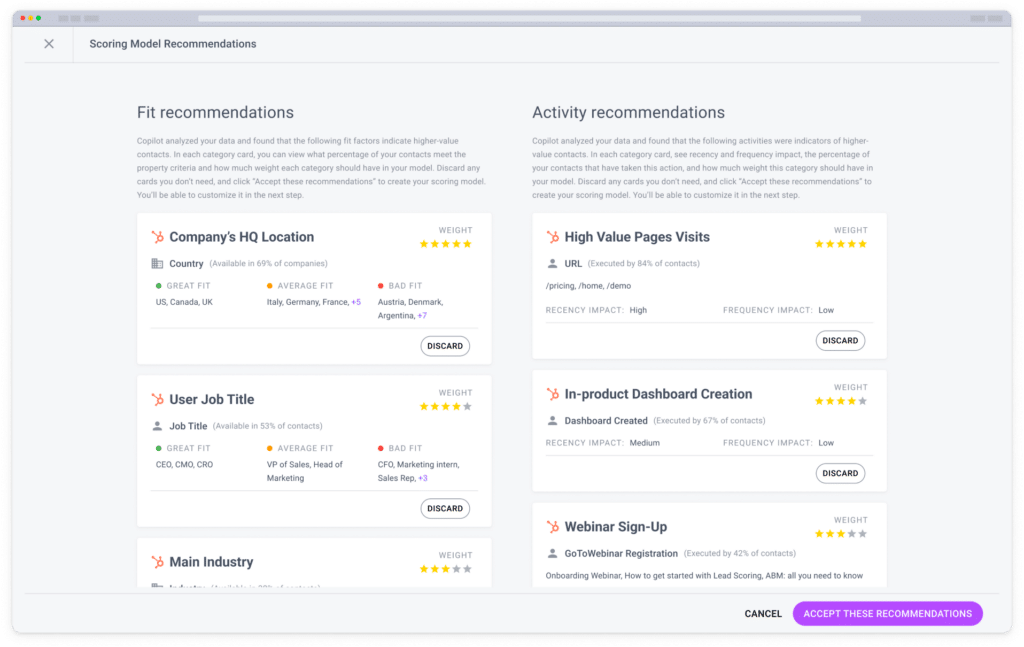Want to know how to create and capture demand? You’re in the right place! Use this Breadcrumbs guide to find all you need to know about demand generation tactics.
The Importance of Demand Generation in Business
Before we dive into the tried-and-true tactics to generate more demand for your business, let’s quickly review the basics of demand generation.
What is Demand Generation?
In demand generation, you build interest in your product over time to increase its demand. For example, strategies like “build in public” and product-led marketing are all examples of demand generation.
While this strategy is often compared with lead generation, they’re not the same—lead generation focuses on capturing relevant consumer information to pitch to them. In contrast, demand generation focuses on building a market for your product/service.
The Role of Demand Generation in Sales and Marketing
The way it stands, demand generation is the first process of both sales and marketing. For instance, if you wish to nurture qualified leads with the help of marketing campaigns or if you wish to convert leads and get sales, you’ll need to begin with generating demand for your products first.
However, marketing teams and sales teams need to create strategic goals to define a correct demand-generation strategy that helps them achieve these goals.
Lead Scoring with Breadcrumbs: Your First Demand Generation Tactic
With the basics out of the way, let’s explore the importance of lead scoring within the demand generation umbrella.
The Role of Lead Scoring in Demand Generation
Remember how we discussed that marketing and sales teams need to define a goal? Well, lead scoring models will help you be more strategic with these goals by helping you analyze which leads to focus on.
They’ll also help you with:
- Defining your ideal customer profile (ICP)
- Alignment of marketing and sales teams
- Data-driven decision making
- Better lead nurturing
- Resource allocation
- Lead segmentation
An Introduction to Breadcrumbs
Breadcrumbs is one of the more popular lead scoring solutions in the market. You can leverage it to:
- Segment leads using co-dynamic distribution to personalize marketing messages
- Identify areas for campaign improvement
- Create demand generation campaigns
- Find out revenue opportunities
- Nurture leads with apt content
Not to toot our own horn, but if you’re looking for lead scoring models, Breadcrumbs is one tool you need in your tech stack (we’ll explain our reasoning in the next section).
How Breadcrumbs Streamlines Lead Scoring
Integrating Breadcrumbs with your CRM systems helps automate the entire lead scoring process for free (you can use our Copilot tool to undertake this task).
That means you can leverage Breadcrumbs to find revenue opportunities and segment leads. But you can also use it to find insights in real time, visually interact with data, and access recommendations to improve your campaigns.
The best part is that you can do all of that without spending any effort or money! Let’s talk about how Breadcrumbs can help boost your revenue.
Other Effective Demand Generation Tactics
Besides using Breadcrumbs as your go-to demand generation tool, here are other ways to spark demand.
Content Marketing for Demand Creation
In the delicate dance of demand generation, content marketing is your gentle gardener, nurturing tiny seeds of interest into a thriving forest of loyal customers.
Keeping the prose and poetry aside, you can learn a lot from real-life examples of brands that leveraged content marketing for demand generation. You can also outsource content marketing to meet up with the customer demands.
Exhibit A is Campus.edu. Here’s how the company increased its service demand through content marketing tactics:
- Campus.edu doesn’t force-feed information. They offer a smorgasbord of articles on diverse educational topics, from career advice to study tips. The company also focuses on enriching its audience’s journey–building trust and loyalty.
- Their blog posts weave personal narratives, real-life examples, and humor into informative content. This keeps their audience engaged and wanting more, which is the end goal of any good demand-generation strategy.
- For Campus.edu, content isn’t a monotonous monoculture. They explore diverse formats like videos, infographics, webinars, and interactive quizzes, catering to different learning styles and keeping their audience buzzing with various formats.
- The company also doesn’t let its content wither in the shade. Campus.edu utilizes social media, email marketing, and collaborations to get its content seen.
Other brands, like BigMailer, have a different spin on the last demand generation tactic. They collaborate with affiliates to increase demand. According to Lilia Tovbin, CEO and founder of BigMailer.io, this strategy has helped them increase sign-ups by 35% and new users by 40% in just six months.
Social Media Engagement for Demand Capture
Today, social media is one of the best avenues you can explore to capture user demand, and this is mainly because:
- You can leverage different strategies on social media platforms (e.g., influencer marketing, lead generation, collaborations, contests, etc.) to capture demand.
- A large chunk of your customers (probably) already interact on the platform.
For example, if you look at House of Joppa’s social media pages, you’ll find they often host giveaways or collaborate with others in the industry to keep their audiences engaged.
Beyond the usual suspects of pay-per-click ads and social media blitzes, House of Joppa also manages to capture website demand through a tempting 10% off for newsletter subscribers.
However, coming back to social media, you can engage your prospects with the help of polls, quizzes, memes, ads, educational content, user-generated content (UGC) highlights, and a bunch of other activities.
The options are endless. Take your pick!
Webinars as a Demand Generation Tool
When a prospect agrees to participate in your webinar, they often want more information about your industry or product. Once they find they might be able to get the answers to their questions, generating demand becomes easier.
We’re not just making up statements here. Let’s look at real-life examples to back up our claims. Companies like Stallion Express created a webinar on eCommerce shipping trends and their experience jumping on certain trends.
This topic was so interesting to their user base that they saw a 20% increase in sign-ups and conversion rates (according to Diana Zheng, head of marketing at Stallion Express).
SEO Optimization for Demand Generation
Last but not least, another powerful demand generation tactic is search engine optimization (SEO).
SEO-friendly content is nothing but:
- Content written with high-quality standards
- Keeps the correct user intent in mind
- Includes the right keywords
This harmony helps prospects easily engage with it and understand more about your product/service.
Put yourself in the shoes of the consumer. Say you type “marketing-related queries” in the search engine, and a particular company is ranking on the first page of search engine result pages (SERPs).
Wouldn’t your trust factor in the company increase? Wouldn’t you probably end up reading more of their content and becoming more aware of the services they offer?
A real-life case study of this comes from Grooveshark. Sam Tarantino, founder of Grooveshark, says, “By strategically using relevant keywords in our content, we were able to boost our visibility on search engines. This led to a 200% increase in our website traffic within six months, clearly demonstrating the power of SEO in capturing demand.”
Implementing Your Demand Generation Plan
And there you have it. Five ways to create and capture demand. So, how do you put it into action?
Incorporating Lead Scoring with Breadcrumbs
When you’re ready to create your own demand generation plan, the first step on the to-do list is the foremost demand generation strategy mentioned—lead scoring.
That’s where a tool like Breadcrumbs would be able to help you. All you need to do is connect Breadcrumbs with your tech stack and let the tool do its job. With it, you’ll find revenue opportunities, data-driven insights, visual intelligence, and more.
Applying Other Key Tactics
Next up, you need to analyze other demand generation strategies (i.e., content marketing, webinars, SEO optimization, and social media engagement) and determine which tactic will work best for your customers and where to allocate resources.
For example, a company like FormHealth figured out that to generate demand, it’d need to provide personalized experiences to its prospects. Hence, it has a quiz on its website that allows interested parties to determine if their program benefits them.
Once inside the quiz, users must answer questions about their motivations and their current health history.
After answering other questions about weight and insurance, users must supply their email addresses to receive relevant, personalized information about their health treatment plan.
The company then sends emails with links to blog articles on medications such as Zepbound, Mounjaro, Wegovy, etc., or other nutrition and exercise-related topics. Why? These are the types of relevant information that those who originally responded to the quiz will be interested in receiving.
Hyper-personalization works wonders in boosting conversion rates. It sounds insignificant, but the results are transformative.
Setting Goals and Tracking Progress
Finally, all you need to do is track if all the demand generation you have been doing is resulting in any leads, interest in marketing materials, or sales.
And from thereon, it’s all a game of insights, trial and error, feedback, and improvement.
Conclusion: The Power of Demand Generation Tactics
That’s all we have for today. Let’s wrap it up before sending you off to your own brainstorming session.
Recap of Key Tactics and Tools
In the previous sections, we touched upon the enlisted five ways to create and capture demand:
- Social media engagement
- Content marketing
- SEO optimization
- Lead scoring
- Webinars
Among tools, you can’t go wrong with Breadcrumbs’ Copilot, which helps manage your lead-scoring activities. Why work harder when you can work smart with Breadcrumbs?
The Role of Early Planning and Implementation
Ideally, if you’re on the path of creating a demand generation strategy, try to create a tentative marketing plan and sales script, which you can improve upon later down the line. Doing so will help you manage the new prospects coming your way.
But to even begin creating a marketing or sales plan, the first step in the process is to define your ICPs—and that’s another area where Breadcrumbs can help you.
To find out what your ICPs look like, how they interact with your content, and which leads to prioritize, book a free demo with our revenue experts!










